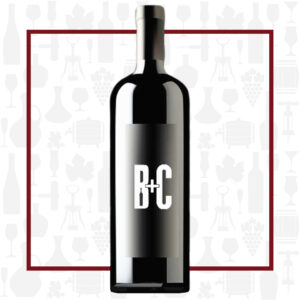Cellar Profile
Established in 1984, Salcheto is the creation of viticulturist and winemaker, Michele Manelli. Michele’s genuine passion for refined and delicate wines has propelled this tiny estate into one of Montepulciano’s top producers. His mission is simple and clear: seek quality, both in the vineyard and the cellar, with an unfailing respect for the character of the grapes. Manual collections, sulfite-free vinifications, native yeasts, “Tuscan Governo” method and large botte and tonneaux barrels are the tools used to produce wines that are elegant and soft, with pronounced aromas and uniqueness for each vintage released. Though lesser known than Chianti Classico and Brunello di Montalcino, Vino Nobile offers incredible value and an earlier drinking window for Tuscan wine lovers. Geographically situated between its more famous neighbours, Vino Nobile’s style takes the best from each—bright and supple, concentrated and powerful. Salcheto is an ‘off the grid’ winery operating one of the wine world’s only energy-independent cellar systems. Along with countless other environmental initiatives, this led to Salcheto being named Gambero Rosso’s Sustainable Winery of the Year in 2014. Their 50 hectares of organically- and biodynamically-farmed vines are planted with Prugnolo Gentile (Sangiovese), Canaiolo, Mammolo, Colorino, Merlot and Trebbiano. Their ‘Obvius’ lineup offers a clean, modern style of natural wines made from, as Michele puts it, ‘grapes only’.
Region
Vino Nobile di Montepulciano is one of Italy’s classic red wines and has unquestionably helped Tuscany retain its privileged place on the world wine map. It comes from the vineyards which surround Montepulciano, a picturesque hill town 40 km southeast of Siena, in southeastern Tuscany. The key grape variety grown here is Sangiovese (known locally as Prugnolo Gentile). According to DOCG rules, to be labeled as Vino Nobile di Montepulciano a wine must come from vineyards on the hills which surround Montepulciano. This area is made up of slopes reaching 250–600 masl in altitude, located between two rivers – the Ocria and the Chiana.
Vineyard
The Salcheto Estate vineyard soil is reddish clay with sand, typistic of all the greatest vineyards of Vino Nobile di Montepulciano. These old vines, sitting at 500 masl, are warmed by the Mediterranean daytime climate and cooled in the evening, allowing the grapes to ripen fully while maintaining acidity. The vineyards are farmed biodynamically, with a close eye towards the smallest carbon footprint and the smallest ecological disruption possible.
Varieties
Sangiovese, a dark-berried vine, is the most widely planted grape variety in Italy. Virtually synonymous with the red wines of Tuscany and all the romanticism that goes with the territory, Sangiovese is the core constituent in some of the great names in Italian wine. It is prized for its high acid, firm tannins and balanced nature. Savoury flavours of dark cherries and black stone fruit are characteristic and may be backed by secondary notes of tomato leaf and dried herbs. The use of oak has become more popular and this coaxes richer flavours from the grapes, tending toward plum and wild raspberry.
Winemaking
Hand-harvested from grapes left on the vine a little longer than the rest of the vineyard. A portion of these grapes are selected for the Toscano Governo method – they are dried on mats under the Tuscan sun until they shrivel or “raisin”. The juice from these grapes is thick, rich and intense. Combined with the rest of the pressed juice undergoing fermentation, it adds richness, mouthfeel and complexity. It also helps kick start any stuck fermentations and lessens the sensation of malic and tartaric acid. The wine was aged for 24 months in a combination of large botte and smaller tonneaux oak. Bottled unfined and unfiltered, the wine was further aged for at least a year before release.
Tasting Notes
Not your typical Vino Nobile, there are notes of Sultana raisin, plum pie and cassis on the nose, along with some intriguing savoury aromas. On the palate, it is lush and expressive. The dried fruits are there, but there is some raspberry and sour cherry elements as well. Underlying it all is a wealth of mouthwatering acid tingle and some marked but supple tannins. Enjoyable now, this will reward some mid-term cellaring. Enjoy with a seared rare tenderloin or a hearty beef stew.

 info@buyersandcellars.ca
www.buyersandcellars.ca
info@buyersandcellars.ca
www.buyersandcellars.ca